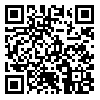Volume 11, Issue 3 (9-2021)
J Health Saf Work 2021, 11(3): 395-416 |
Back to browse issues page
Download citation:
BibTeX | RIS | EndNote | Medlars | ProCite | Reference Manager | RefWorks
Send citation to:



BibTeX | RIS | EndNote | Medlars | ProCite | Reference Manager | RefWorks
Send citation to:
Mazloumi A, Mehrdad R, Kazemi Z, Vahedi Z, Hajizade L. Risk Factors of Work Related Musculoskeletal Disorders in Iranian Workers during 2000-2015. J Health Saf Work 2021; 11 (3) :395-416
URL: http://jhsw.tums.ac.ir/article-1-6535-en.html
URL: http://jhsw.tums.ac.ir/article-1-6535-en.html
1- 1 Department of Occupational Health Engineering, School of Public Health, Tehran University of Medical Sciences, Tehran, Iran 2 Sports Medicine Research Center, Neuroscience Institute, Tehran University of Medical Sciences, Tehran, Iran
2- Center of Research on Occupational Diseases, Tehran University of Medical Sciences, Tehran, Iran
3- 1 Department of Occupational Health Engineering, School of Public Health, Tehran University of Medical Sciences, Tehran, Iran- 4 Department of Ergonomics, School of Public Health, Iran University of Medical Sciences, Tehran, Iran ,z-kazemi@razi.tums.ac.ir
4- 1 Department of Occupational Health Engineering, School of Public Health, Tehran University of Medical Sciences, Tehran, Iran- 4 Department of Ergonomics, School of Public Health, Iran University of Medical Sciences, Tehran, Iran
5- Department of Occupational Health Engineering, School of Public Health, Tehran University of Medical Sciences, Tehran, Iran
2- Center of Research on Occupational Diseases, Tehran University of Medical Sciences, Tehran, Iran
3- 1 Department of Occupational Health Engineering, School of Public Health, Tehran University of Medical Sciences, Tehran, Iran- 4 Department of Ergonomics, School of Public Health, Iran University of Medical Sciences, Tehran, Iran ,
4- 1 Department of Occupational Health Engineering, School of Public Health, Tehran University of Medical Sciences, Tehran, Iran- 4 Department of Ergonomics, School of Public Health, Iran University of Medical Sciences, Tehran, Iran
5- Department of Occupational Health Engineering, School of Public Health, Tehran University of Medical Sciences, Tehran, Iran
Abstract: (3400 Views)
Introduction: Musculoskeletal disorders (MSDs) are prevalent in work settings and are associated with high rate of prevalence and costs. Musculoskeletal conditions have multifaceted nature, and occupational factors play an important role in their development. The aim of this study was to identify the risk factors of work-related musculoskeletal disorders in the working population in Iran during 2000 to 2015.
Material and Methods: Using the appropriate search terms, articles published in the journals, student thesis, and those presented at the conferences were searched through authentic English databases (Google Scholar, Scopus, PubMed) and Farsi ones (Magiran, SID, IranMedex, Irandoc). Following removal of duplicate citations and irrelevant studies, the full texts of the remaining publications were prepared and assessed for more detail.
Results: Perceived discomfort in low back region obtained the highest score in workers of industrial, administrative, service, and agricultural settings. However, in the handicraft and educational groups, the highest percentage of discomfort was belonged to neck (66.7%). Findings showed that the most commonly used techniques for evaluation of musculoskeletal disorders and risk factors were, respectively, Nordic questionnaire (NMQ) (76%) and REBA (13.9%). Moreover, all identified risk factors were classified into eleven groups including: biomechanical, work environment design, tools, equipment, temporal aspects of job design, job content, organizational aspects, economic and financial issues, social aspects, individual characteristics, and training.
Conclusion: Overall, a wide range of risk factors reported in the previous studies were categorized in the present review. The results are suggested to be considered by managers and decision makers as a framework to take measures for controlling musculoskeletal disorders to accomplish the goal of ergonomics, which is productivity and well-being.
Material and Methods: Using the appropriate search terms, articles published in the journals, student thesis, and those presented at the conferences were searched through authentic English databases (Google Scholar, Scopus, PubMed) and Farsi ones (Magiran, SID, IranMedex, Irandoc). Following removal of duplicate citations and irrelevant studies, the full texts of the remaining publications were prepared and assessed for more detail.
Results: Perceived discomfort in low back region obtained the highest score in workers of industrial, administrative, service, and agricultural settings. However, in the handicraft and educational groups, the highest percentage of discomfort was belonged to neck (66.7%). Findings showed that the most commonly used techniques for evaluation of musculoskeletal disorders and risk factors were, respectively, Nordic questionnaire (NMQ) (76%) and REBA (13.9%). Moreover, all identified risk factors were classified into eleven groups including: biomechanical, work environment design, tools, equipment, temporal aspects of job design, job content, organizational aspects, economic and financial issues, social aspects, individual characteristics, and training.
Conclusion: Overall, a wide range of risk factors reported in the previous studies were categorized in the present review. The results are suggested to be considered by managers and decision makers as a framework to take measures for controlling musculoskeletal disorders to accomplish the goal of ergonomics, which is productivity and well-being.
Type of Study: Review |
Received: 2021/09/20 | Accepted: 2021/09/1 | Published: 2021/09/1
Received: 2021/09/20 | Accepted: 2021/09/1 | Published: 2021/09/1
Send email to the article author
| Rights and permissions | |
 |
This work is licensed under a Creative Commons Attribution-NonCommercial 4.0 International License. |






